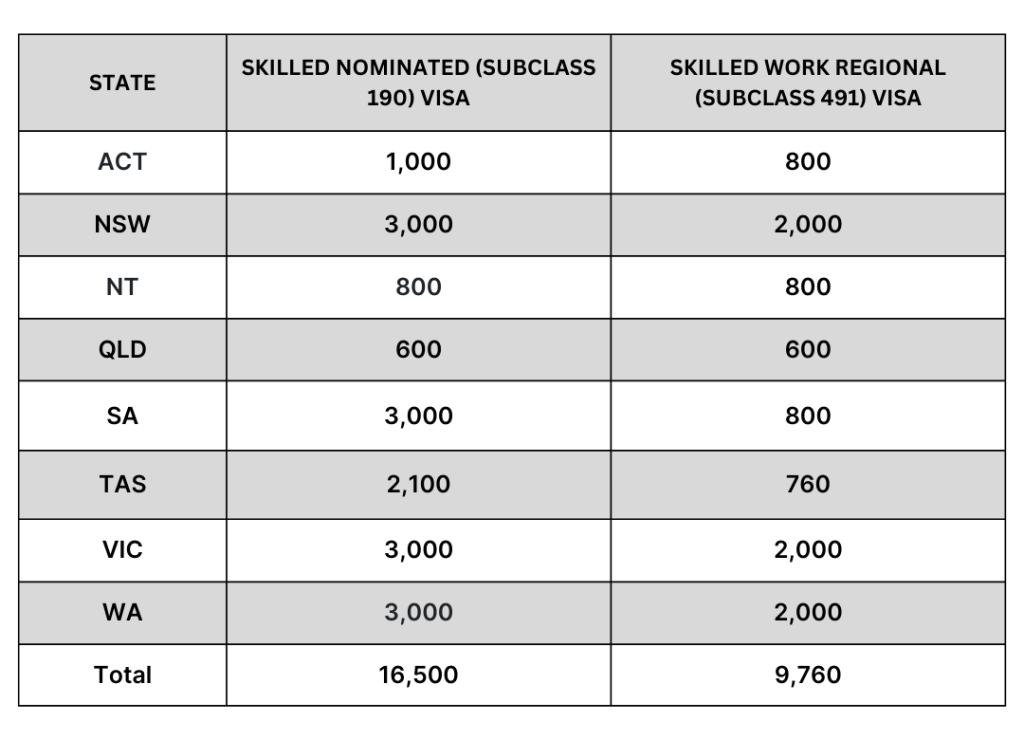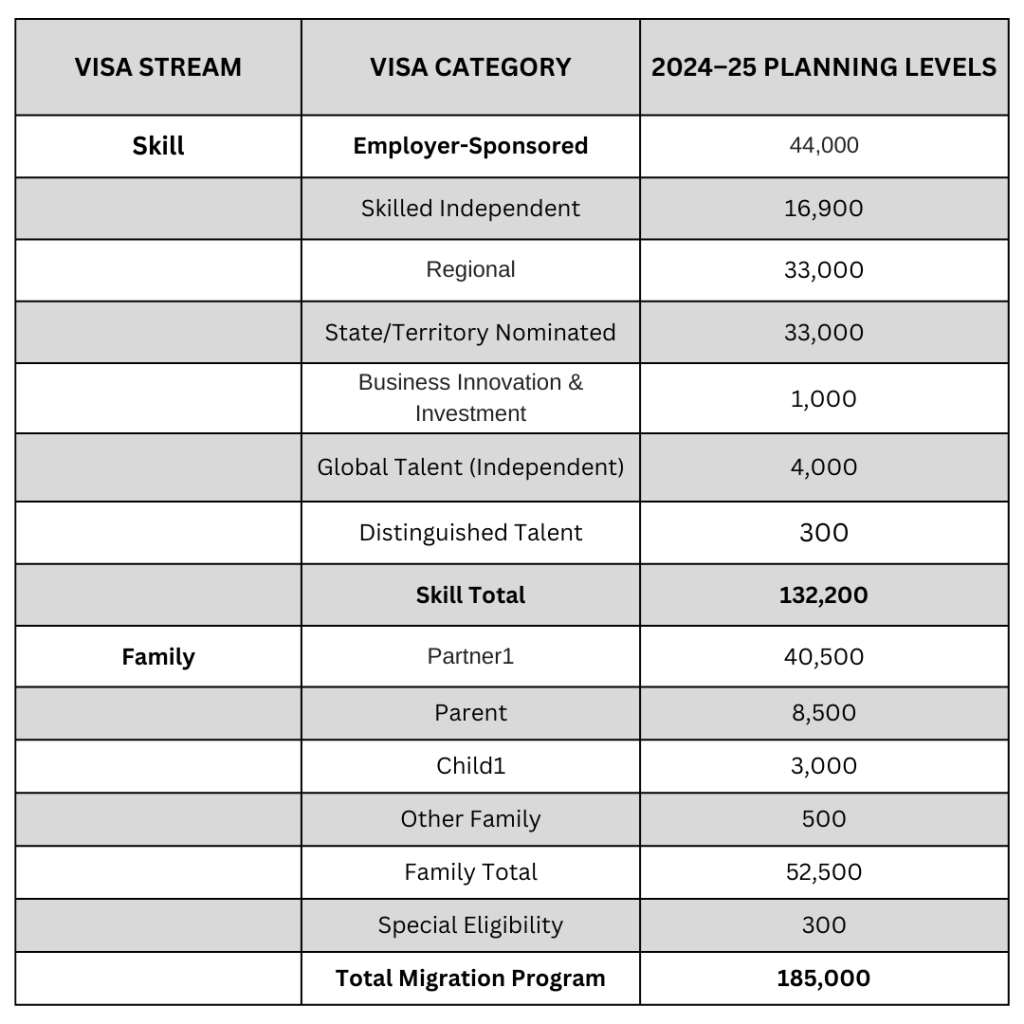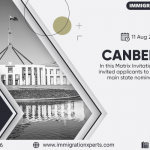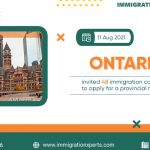State and Territory Nomination Allocations (2024-25)
The 2024-25 Migration Program includes specific nomination allocations for states and territories under the Skilled Nominated (Subclass 190) visa and the Skilled Work Regional (Subclass 491) visa categories. These allocations are designed to meet regional economic and labour force needs.
Key Highlights of the 2024-25 Migration Program:
- Skill Stream (71% of the program): A total of 132,200 places, with a focus on filling skill shortages and boosting regional development.
- Family Stream (28% of the program): 52,500 places dedicated to reuniting families, with the majority for Partner visas.
- Special Eligibility Stream: 300 places for unique cases, such as returning residents.
Program Adjustments:
- Employer-Sponsored Visas: Increased to 44,000 places, providing a pathway to permanent residence for temporary migrants.
- State/Territory Nominated Visas: Expanded to 33,000 places, supporting regional Australia’s economic and labour needs.
- Skilled Independent Visas: Reduced to 16,900 places, reflecting a shift in focus towards other skilled migration pathways.
- Business Innovation & Investment Program (BIIP): Reduced to 1,000 places, with the program closing permanently from July 2024.
- Global Talent Visas: Slightly reduced to 4,000 places, transitioning towards the forthcoming National Innovation visa.
Australia’s 2024-25 Migration Program is strategically designed to meet the country’s economic needs while promoting social cohesion and regional development. The program ensures that Australia continues to attract highly skilled individuals who can contribute to the nation’s growth and prosperity.
Original Content - LinkedIn News Letter







